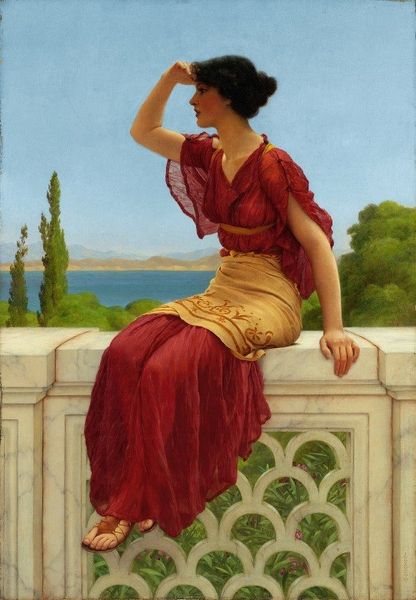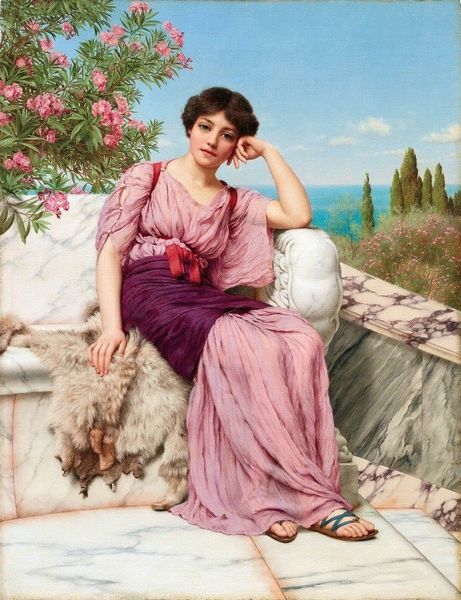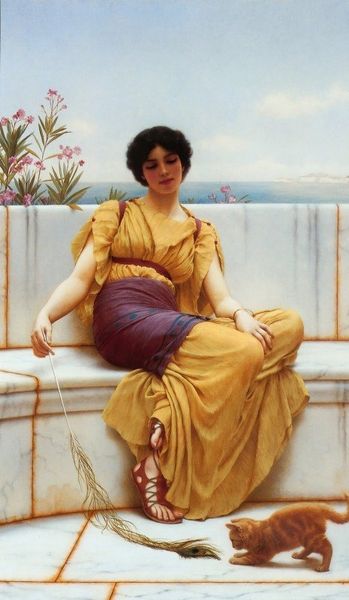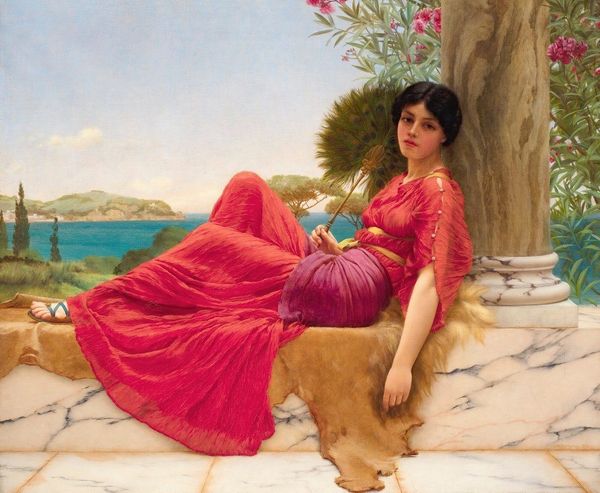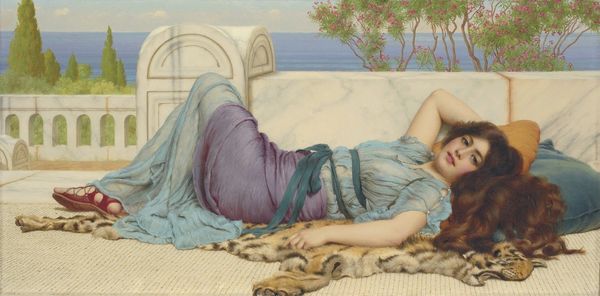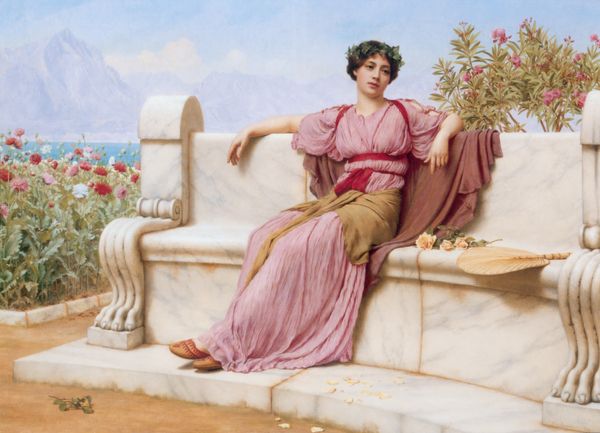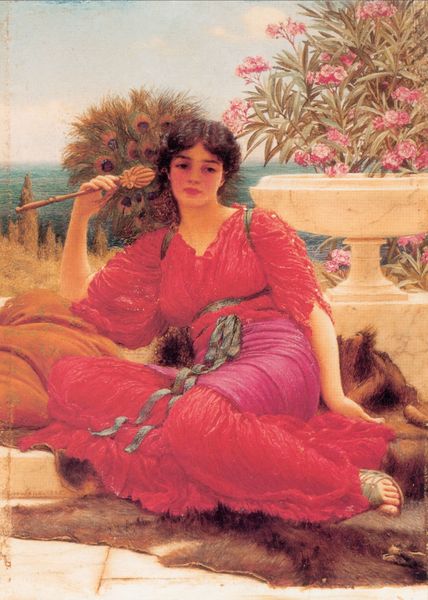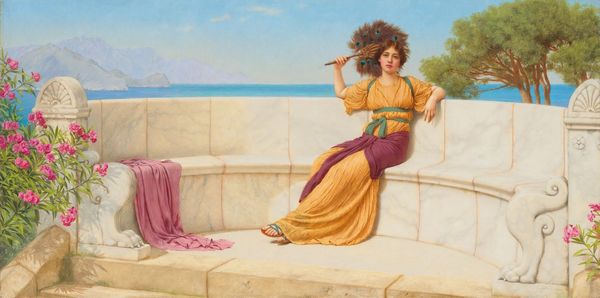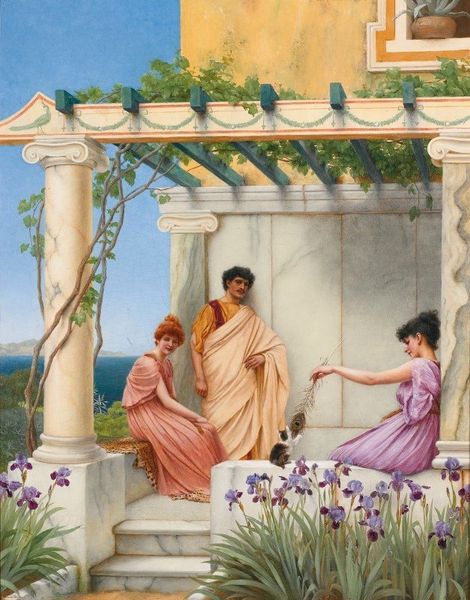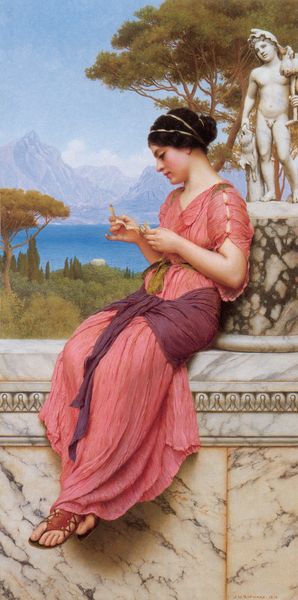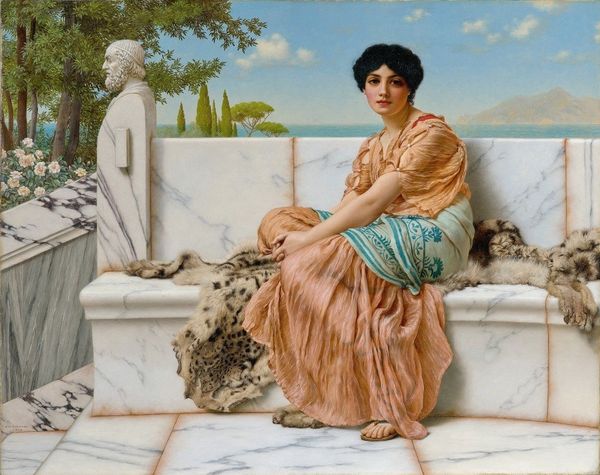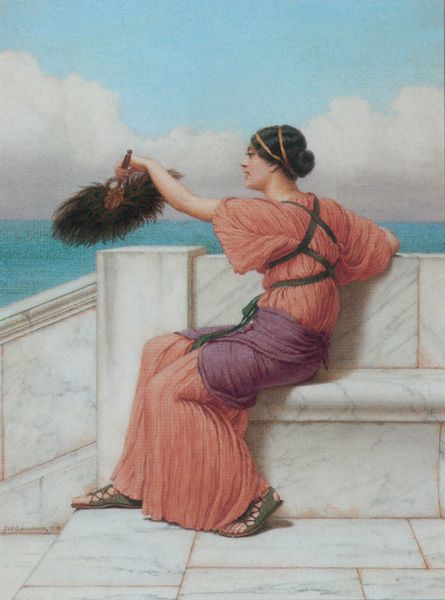
#
gouache
#
figurative
#
egg art
#
possibly oil pastel
#
oil painting
#
facial painting
#
painting painterly
#
animal drawing portrait
#
portrait art
#
fine art portrait
#
celebrity portrait
Copyright: Public Domain: Artvee
Curator: John William Godward, a British painter, created this scene, "Leisure Hours," in 1905. It appears to be rendered in oil. What’s your initial impression? Editor: Immediately, I notice the stillness. A sense of serene contemplation pervades the composition; the colour palette creates this calm, warm ambience. Curator: It’s classic Godward, really, in its devotion to idealised beauty. Consider the crisp lines of the architecture and the meticulous rendering of the woman's draped clothing. Note how he positions her against the backdrop of the marble balustrade. Editor: Yes, the composition is self-consciously arranged. Godward uses the architectural elements to create a proscenium framing the sitter and the vista, and the reference to Ancient Greece is unmistakable in her dress and the balustrade design. He idealises leisure as performative luxury for a Victorian and Edwardian audience. Curator: True. He offers us a construction. Consider also how the light emphasizes texture—the cool, hard marble juxtaposed against the soft fabric. The interplay isn’t only visual; it evokes tactile sensation. And how the composition uses the curve of her form echoed in the cascade of the oleander blossoms, which mirrors and enriches her visual presence, underscoring a visual language where line and shape become characters themselves. Editor: To me, the oleander represents the context in which it was created: these paintings sold the allure of antiquity and reinforced the British Empire's cultural aspirations of grandeur, using this artistic tradition as an assertion of power through aesthetics. Did such idealised art affect British public identity, shaping perceptions of British life and identity, in both obvious and subtle ways? Curator: Possibly. But beyond those readings, what about the painting's formal qualities and unique interpretation, or his personal investment in classical themes? Godward didn’t simply recreate classical images; he used them to investigate questions of form, light, and texture that resonated deeply with his aesthetic sensibilities, I suppose. Editor: I concede your points regarding light, texture, and form, but what I cannot ignore is how Godward’s paintings can reveal to us period-specific values, and assumptions. These elements certainly speak volumes, even if unintentionally, about that complex social climate. Curator: A perfect summary of the many layers that this work presents. Editor: Agreed; layers both seen and unseen.
Comments
No comments
Be the first to comment and join the conversation on the ultimate creative platform.

